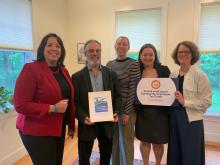Structural racism is a pollutant that threatens the community development ecosystem.
“Too many Community Development Corporations have abandoned their roots and don’t empower local residents,” said one Community Development Corporation (CDC) leader, noting that the professionals on staff were driving the agenda, not residents. “That’s unfair” said another, who added, “we have to attract investments from banks and work with City Hall to get things done.” This was the summer of 1993, at my very first MACDC board meeting. This particular debate–and various versions of it–has animated community development for the past 25 years. As our movement’s founding father, Mel King, often asks: “in whose interest” are we working? Having just graduated from law school and starting a career in community development, I wondered what precisely I had walked into.
The debate manifests itself around three related but distinct tensions faced by CDCs across the country:
- Should we focus our efforts on places or on people?
- Should we adopt a comprehensive approach or specialize in a single area to achieve greater scale and impact?
- How do we balance power between professional community developers and resident leaders?









